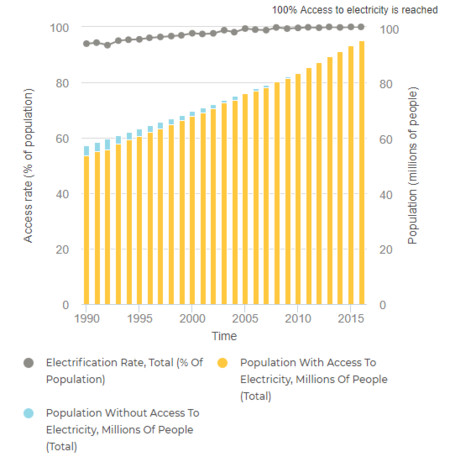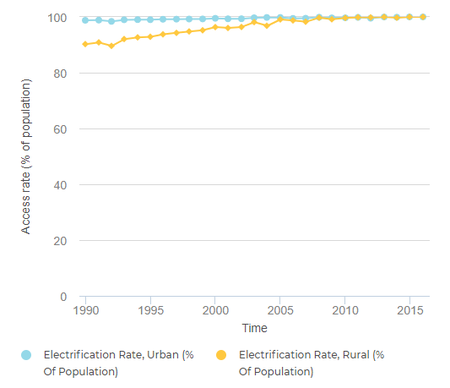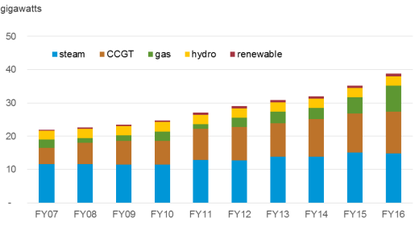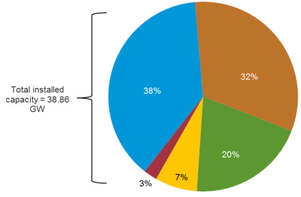Introduction
The Arab Republic of Egypt is located in North Africa and borders with Libya in the West, Sudan in the South and Palestinian territories and Israel in the East, while in the North, it is washed by the Mediterranean. Its population is mainly concentrated along the river Nile, as the rest of the country's territory is largely desert.
Most parts of the country have a hot desert climate with extreme heat occurring during summer. An exception is the northern Mediterranean coast which receives more rainfall during winter and has a generally more moderate climate.

Fig.1: Map of Egypt showing Examples of N.G. & C.O. Pipelines, Ports, Fields..etc (EIA, 2018)
Egypt is a country with a high potential of natural resources: precious stones, natural gas, oil, coal and large reserves of fossil fuel energy sources; approximately 4189 billion barrels of oil reserves and an estimated 77200 billion cubic meters of natural gas reserves, as the reserves are in the form of both mainland and coastal deposits.
While more than 90% of the Egyptian generated electricity comes only from oil and natural gas, the major problem that Egypt encounters, especially in the energy-sector is the dynamic growth of population, which is estimated by around 1.3% per year, consequently increasing demand, which eventually fastens the rate of depleting the country's major resources.
According to the US Energy Information Administration (EIA), it is the largest non-OPEC oil producer in Africa and the third largest dry natural gas producer on the continent, following Algeria & Nigeria.
The country also represents a vital role-player in the international energy market, as a major transit route, by operating the Suez Canal and the Suez Mediterranean Pipleline (SUMED), through which the oil is shipped from the Persian Gulf to Europe and the United States.
Energy Situation
Historical Background and an Overview of the Main Energy Sources
Egypt has been known to mainly depend, in all its energy-related activities, on three major sources: oil, natural gas and the hydroelectric power generated from the large dam projects over the Nile: the High Dam, Aswan I & Aswan II.
Despite being a major producer and net exporter of oil, especially in the 1990 , when its oil production peaked, reaching approximately over 900000 bbl/day, Egypt has become a net oil importer around 2009/2010. Thus can be traced back to both economic and population accelerated growth, which accompanied the beginning of the new millennium, leading to an increase in consumption by about 3% per year, resulting in growing of demand, and falling in production, that could roughly meet consumption requirements, resulting in a significant drop in the country’s oil refinery output since 2009.
During the period of the late 1990/early 2000, Egypt has witnessed a state of proliferation of discovering and exploiting huge natural gas reserves around the country, which drove the country to emerge as a key role player in the region as a natural gas producer and exporter. Mainly, due to the same reason as in oil, consumption of natural gas has approximately increased by 7% per year during the first decade of 2000, and production has noticeably decreased by around 3% yearly during the period of 2009-2013, consequently limiting its natural gas exporting capacity to only 5% of its total production by 2013, and eventually driving the country to start signing importing agreements in the following years of 2014 and 2015.
Table.1: General Statistics on Oil & Natural Gas Situation in Egypt
| Oil | Natural Gas |
|---|
| Total Production | 680,000 bbl/day | 2 trillion cubic feet/day |
|---|
| Global Production-Share | 0.72% | 1.7% |
|---|
| Proven Reserves | 3,900,000,000 bbl | 65.3 trillion cubic feet |
|---|
| Global Proven Reserves-Share | 0.2% | 1% |
|---|
| % Total Domestic Consumption | 41% | 53% |
|---|
| Imports | 80,000 bbl/day | To Be Updated |
|---|
| Exports | 189,000 bbl/day | 0.1 trillion cubic feet/year |
|---|
Export Destinations
|
EU (56%), India (28%), China (13%), Others (3%)
|
EU (56%), India (28%), China (13%), Others (3%)
|
|---|
According to reports from American Security Project (ASP) and United Nations Environment Program (UNEP), Egypt has produced approximately 13.2-13.7 billion kilowatt-hours (KWh) of electricity, using hydro power in the period 2012/2013.
Hydro power accounts for about 9% of the total country’s power generation, and around 3% of the country’s total energy consumption, however, the majority of the Nile hydro power's capacity in Egypt has already been exploited and is declining.
to be continue....




